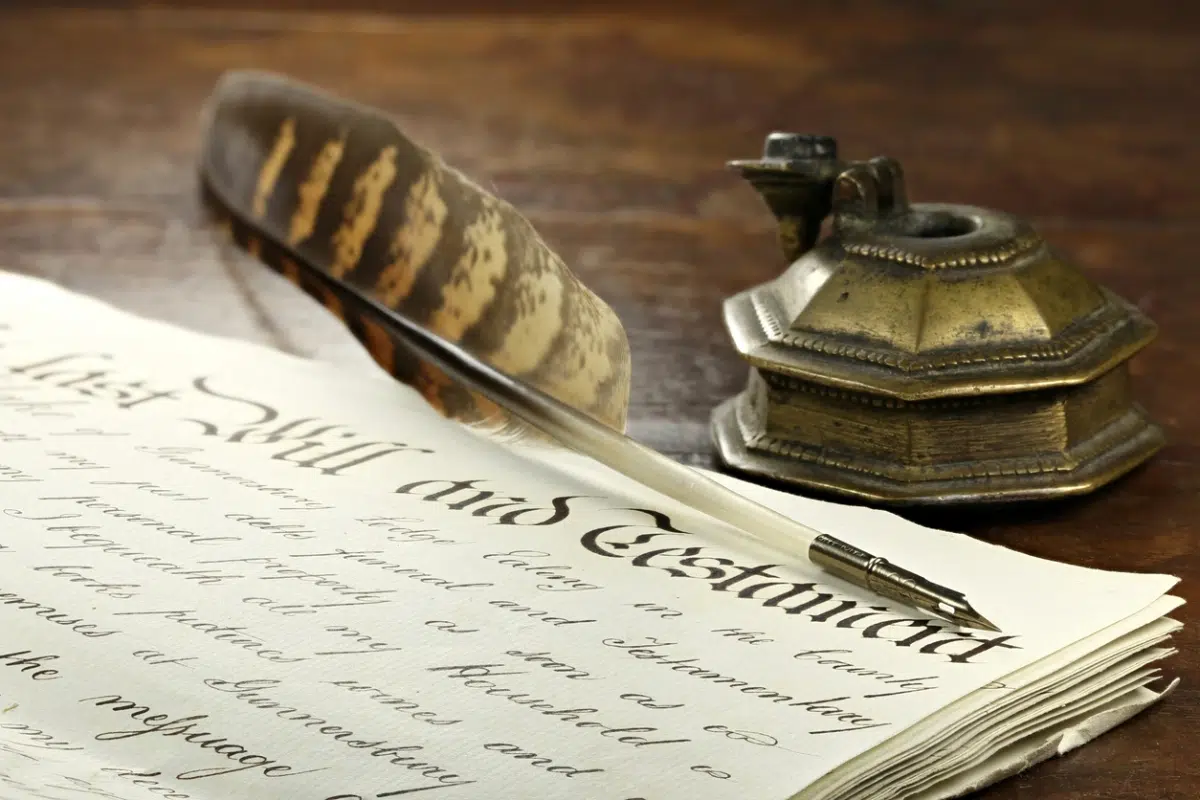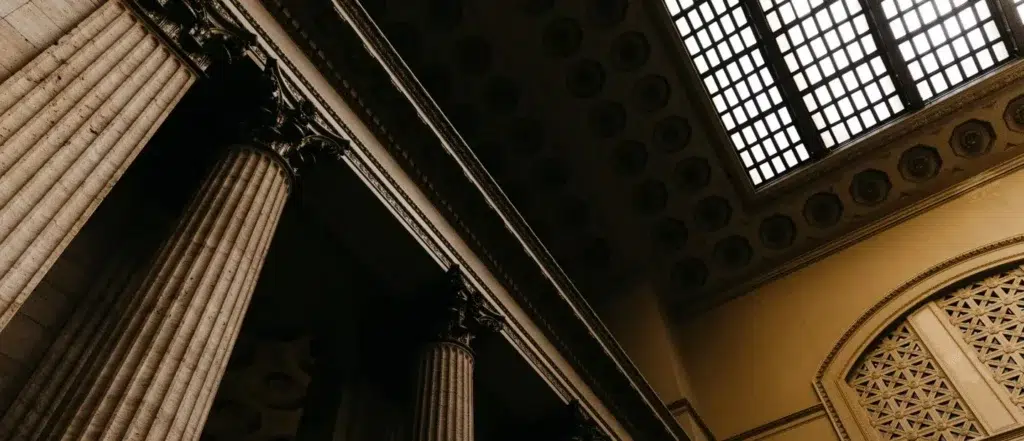
Holographic wills are written in the testator’s own handwriting. Because they don’t have to be notarized or even witnessed, courts tend to look very closely when determining a holographic will’s validity.
Getting a handwritten will successfully through probate can be difficult, and it’s not ideal. However, an experienced estate planning attorney can simplify the process and lessen your chances of making costly mistakes. Here’s a closer look at how to probate a holographic will in Texas.
Legal Requirements for Probating a Holographic Will
When it comes to probate court and handwritten wills in Texas, holographic wills must meet certain criteria to be considered valid. Under Texas law, a will must meet the following requirements to be considered a valid holographic will:
- It must be written entirely in the testator’s own handwriting
- It must be signed by the testator
“Testator” is the legal term for a person who creates a will. To be considered valid, a holographic will doesn’t have to be notarized, witnessed, or filed with the court ahead of time.
Before property can be distributed according to the testator’s wishes, it must go through probate. Probate is the process of “proving” a will’s validity. Because holographic wills don’t have the same requirements as formal wills do, the Texas holographic will probate process involves closely examining the will for any legal issues that may invalidate it.
How to Probate a Holographic Will in Texas
Because of the complexities involved in probating a handwritten will in Texas, it’s best to go through the process with the help of an attorney. Before you begin, take a moment to understand the steps to probate a holographic will:
1. File the Will With the Court
To start the probate process, you must bring the following to the court in the county where the testator lived:
- A copy of the will
- The testator’s death certificate
- An application for probate
A testator who creates a holographic will has the option to file it with the court themselves. However, because holographic wills are usually only created when a testator urgently needs to create a will and cannot feasibly create one with a lawyer, these wills are rarely filed before death.
2. Attend the Court Hearing
Once the will has been filed with the court, the court will schedule the initial court hearing. The hearing accomplishes two objectives: ensuring the will is valid and verifying that the testator wrote it.
3. The Court Appoints an Executor
If the court determines that the will is valid, it will choose an executor to handle the distribution of assets, paying debts and taxes, and other administrative tasks.
4. The Executor Notifies Creditors
The executor must inform any existing creditors of the deceased’s death. These creditors will then have the option of filing a claim against the estate.
5. The Executor Takes an Inventory and Appraises the Testator’s Belongings
All of the deceased’s personal property must be valued by a professional.
6. The Executor Pays Funeral Expenses and Other Debts
Before the deceased’s money and personal property can be distributed to beneficiaries, any outstanding debts must be paid.
7. With Court Approval, the Executor Distributes Assets
After taxes, funeral expenses, and other debts have been paid, the executor can distribute assets to the beneficiaries named in the will.
Court Hearings and Proving the Handwriting
Texas law requires wills to go through probate to verify that they are valid. Holographic wills don’t have the witness requirements of a proper will, so it’s easier for someone intent on committing fraud to do so. This means that the court tends to be very careful when it comes to validating a handwritten will. Exactly what goes on in the courtroom depends on whether the will is self-proving or not.
If the Will Is Self-Proving
A self-proving holographic will is a will with a self-proving affidavit attached. The affidavit is a sworn statement from the testator explaining that they created the will while they were of sound mind.
If a will has a self-proving affidavit, the court doesn’t need to verify that the handwriting is that of the testator. However, the court may still hear challenges to the will. For instance, if a family member believes that the will is the result of undue influence, the court will need to consider that possibility and make a determination.
If the Will Is Not Self-Proving
If you’re familiar with how to probate a holographic will in Texas, you know that having an attached affidavit makes it easier for a handwritten will to pass through probate. Unfortunately, because handwritten wills are usually created as a last resort, very few come with signed affidavits.
If the will isn’t self-proving, the court will need to prove that the will is actually in the testator’s handwriting. Often, they do this by calling two witnesses to testify that the handwriting is the testator’s. If there is disagreement over the handwriting, it might be necessary to call in a handwriting expert.
Duties of the Executor Once the Holographic Will Is Admitted
Knowing how to prove a holographic will in Texas is one thing. However, if the court goes through the required legal process and decides the will is valid, the court-appointed executor must fulfill several duties.
Serving as the executor is a serious commitment. Before you can begin, you must do the following:
- Take an oath affirming your commitment to fulfill all duties
- Post a surety bond
The bond is a safeguard against estate mismanagement. If you don’t perform your required duties and beneficiaries suffer losses as a result, they may file claims against this bond.
Once you have posted your bond and have been formally sworn in, you must fulfill the following duties:
Take a Full Inventory of the Estate
Before assets can be distributed to creditors and beneficiaries, you must know exactly what’s in the estate. Your inventory should include the following:
- All bank accounts and balances
- All real estate holdings
- Investment accounts and balances
- A list of personal property
- A list of debts (like medical bills, credit card balances, etc.)
Personal property should be professionally appraised. While you may handle this process yourself, an experienced attorney can help you make sure your inventory is complete and accurate.
Pay Estate Debts
Next, you must use estate funds to pay liabilities. These are the steps to follow:
- Notify creditors of their right to file claims
- Assess claims and dispute questionable ones in court
- Pay valid claims with estate funds
You must use estate funds to pay outstanding taxes as well. Once taxes are paid, you should request a tax clearance to prove that the estate has no further tax obligations.
Distribute Assets to Beneficiaries
Once debts and taxes have been paid, you must distribute the assets that remain according to the testator’s wishes.
Challenges and Common Issues in Probate of Handwritten Wills
During the process of validating a holographic will, Texas estate executors and family members of the deceased may encounter unique challenges like these:
- Proving that the handwriting is the testator’s
- Interpreting ambiguous clauses in the will
- Verifying that the deceased was of sound mind when writing the will
If the deceased did not file the will with the court or tell the family where it was located ahead of time, family members may even have trouble finding the will itself.
Let Us Help You Through the Probate Process
Unless you’re an attorney, navigating the probate process can be a challenge even under the best of circumstances. Figuring out how to probate a holographic will in Texas can be even more difficult, and if you’re appointed as the executor, even innocent mistakes can land you in serious legal trouble.
Hunter Sargent, PLLC, has helped Texas families navigate probate for seven generations. We use our decades of experience to guide you through the process so you can resolve your loved one’s estate.
If you need help with probate or you’re ready to create your estate plan, call us or reach out online to schedule a consultation today.



